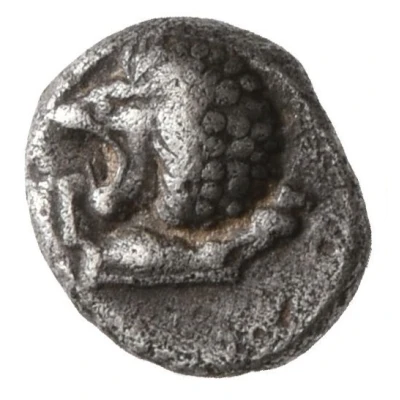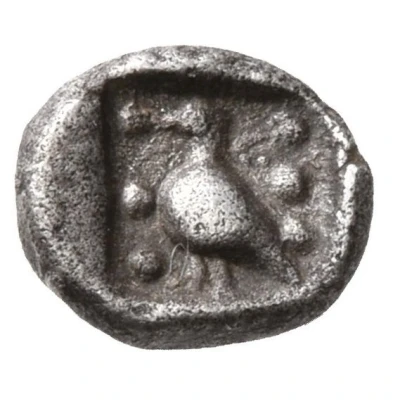


© Leu Numismatik
Tetartemorion 420 BC - 390 BC
| Silver | 0.20 g | 6.0 mm |
| Issuer | Mylasa (Caria) |
|---|---|
| Type | Standard circulation coin |
| Years | 420 BC - 390 BC |
| Value | Tetartemorion (1⁄24) |
| Currency | Drachm |
| Composition | Silver |
| Weight | 0.20 g |
| Diameter | 6.0 mm |
| Shape | Round (irregular) |
| Technique | Hammered, Incuse |
| Orientation | Variable alignment ↺ |
| Demonetized | Yes |
| Updated | 2024-10-09 |
| Numista | N#150571 |
|---|---|
| Rarity index | 89% |
Reverse
Bird standing right or left within incuse square
Comment
Lion facing right, Bird facing right - SNG Kayhan 944; Keckman 922; Klein 432, SNG vAulock 1818image: Roma Numismatics Limited
Lion facing right, Bird facing left - SNG Kayhan 947-948; Keckman 924
image: Roma Numismatics Limited
Lion facing left, Bird facing left - SNG Kayhan 940-943; Keckman 925
image: Leu Numismatik
Lion facing left, Bird facing right - SNG Kayhan 940-945var
image: Auktionshaus H. D. Rauch GmbH
Interesting fact
One interesting fact about the Tetartemorion coin from Mylasa (Caria) is that it features a unique blend of Greek and Persian influences in its design. The obverse side of the coin depicts a bearded male head wearing a Persian-style crown, while the reverse side shows a Greek-style owl perched on a branch. This fusion of design elements reflects the cultural exchange and blending that occurred during the Hellenistic period, when Greek cities like Mylasa were under Persian rule.